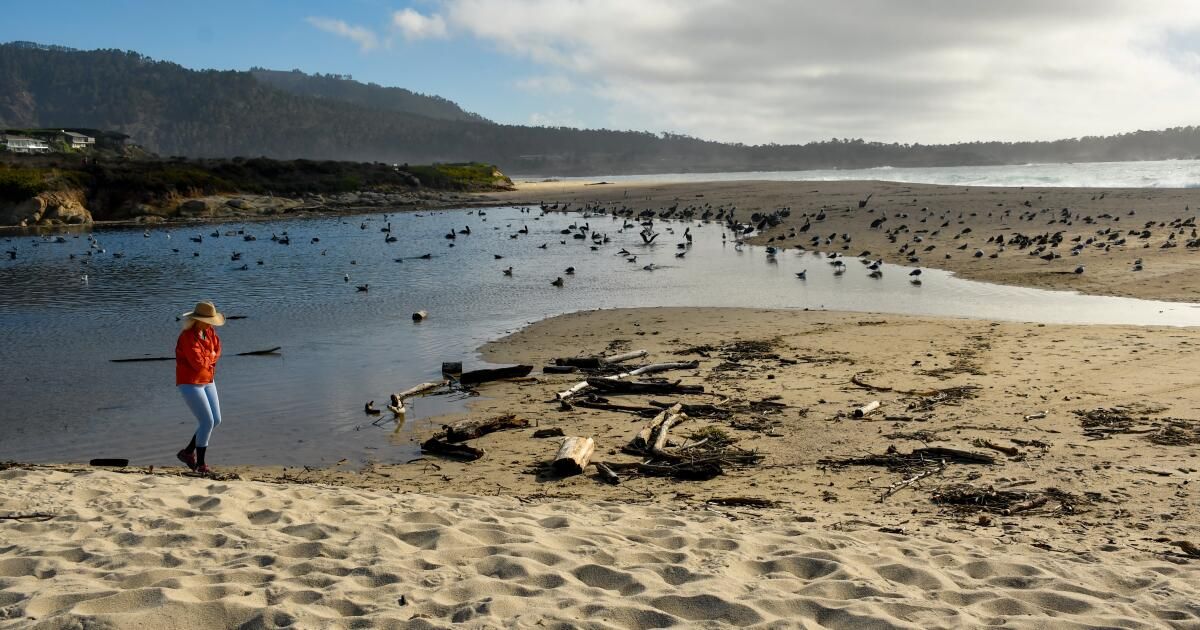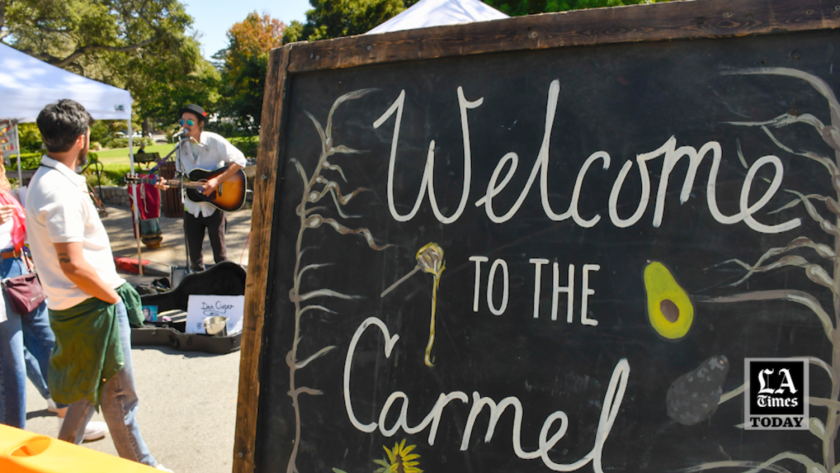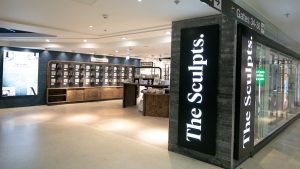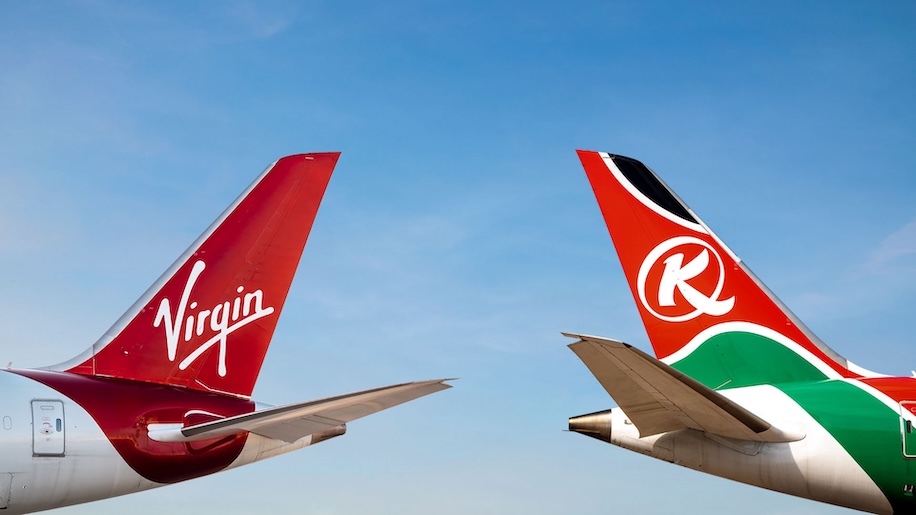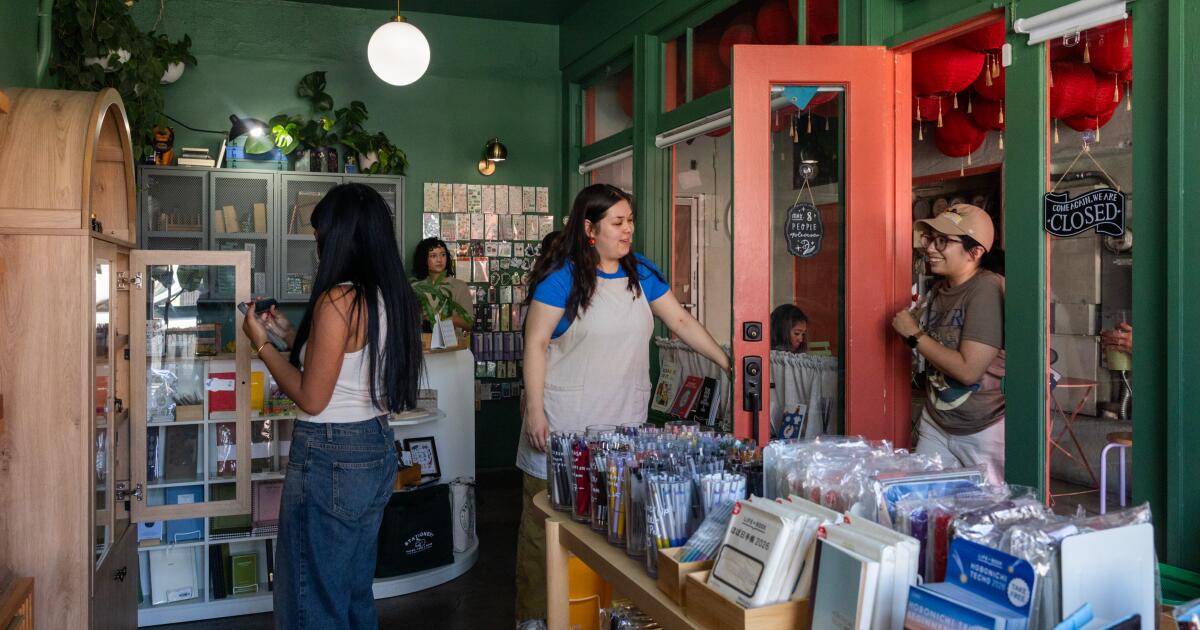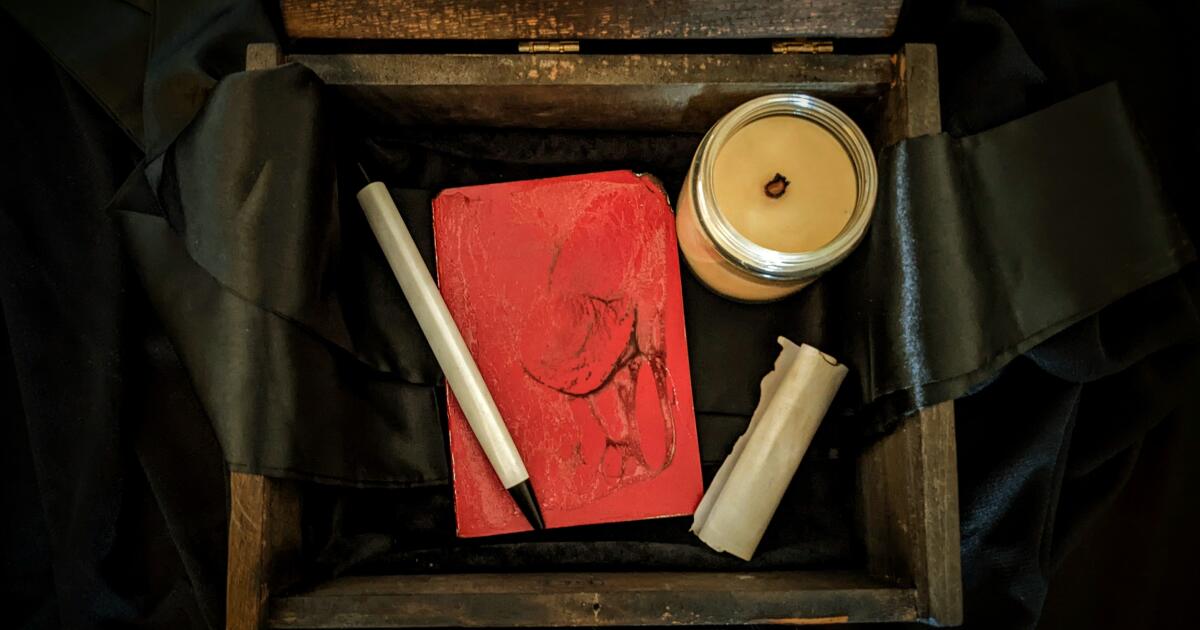In Big Sur, land meets sea in the most surprising ways. Meanwhile, in Carmel, nature meets art, cars, charm, golf and money.
It's hard to look away. And once you get there, it's hard to get out. At least that's what it seemed like a few weeks ago when my wife and I stopped by.
None of us had seen Carmel in a while, and I suppose that's true for many in Southern California, especially since last winter's storms forced the indefinite closure of Highway 1 in Big Sur, near Lucia.
But Highway 1 was always the slow road from Los Angeles to Carmel. The quickest way hasn't changed: Spend 5 1/2 hours running down I-5 and US 101 and, boom, here you are in a remote civilization of rocky coast, immaculate cabins, Dutch doors, pampered dogs with beach access off-leash, a shoreline lined with wind-bent cypress trees, and (is this the most extravagant thing?) up to two hours of free street parking.
Mission Ranch in Carmel includes a sheep paddock and spectacular sunset views.
(Christopher Reynolds/Los Angeles Times)
We arrived on a sunny fall day. The summer crowds were gone, but there were many wealthy visitors present, browsing the boutiques of Ocean Avenue.
In fact, as we walked, we gradually became aware that thousands of Porsche drivers were gathering for a convention, one of the many luxury car events the area hosts each year. At every parking lot and intersection, Boxsters, Cayennes and Spyders of every era and color multiplied like intricately designed bunnies in spring.
“Hey,” said a know-it-all, approaching a group of car drivers in the Mission Ranch yard. “Is this the Ford Fiesta group?”
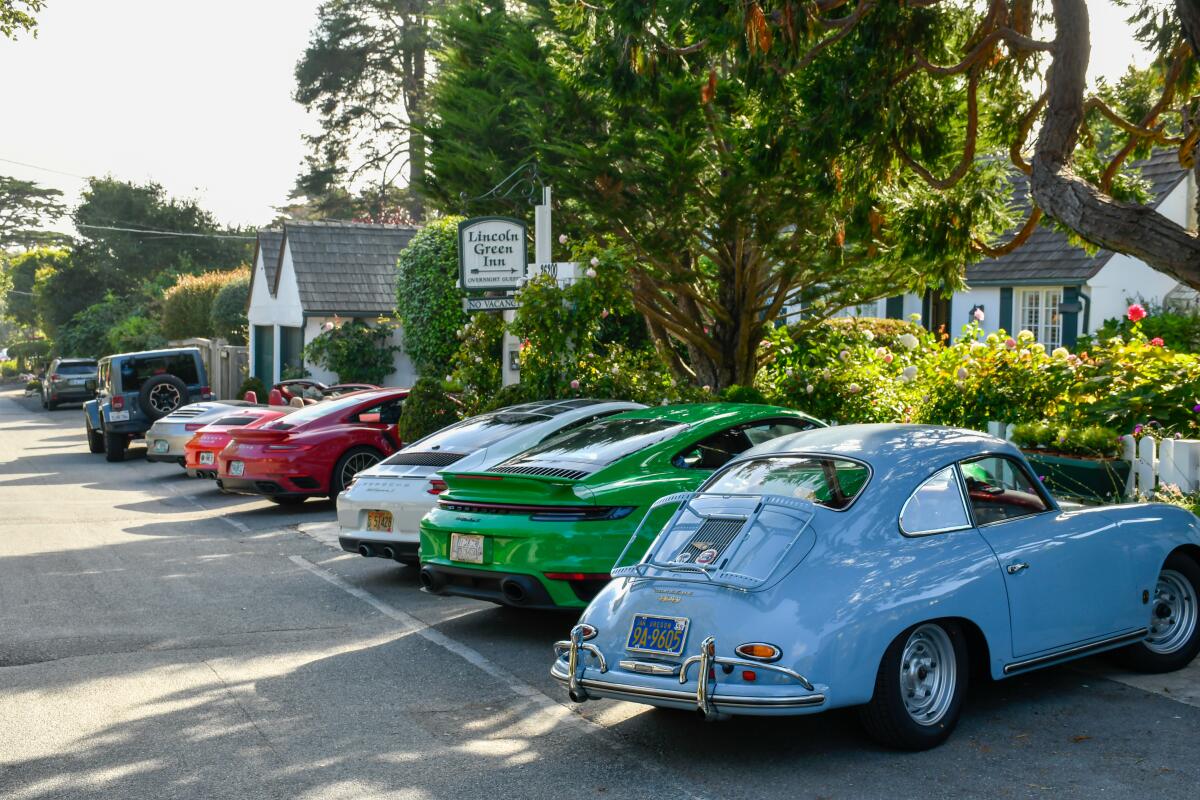
Lincoln Green Inn (and guest Porsche), Carmel.
(Christopher Reynolds/Los Angeles Times)
Even for a couple of Angelenos who have seen many extravagant landscapes and extreme economic situations, the state of beauty and wealth was surprising. This makes it difficult to choose a restaurant or accommodation. But the quality is high. And you don't have to be rich to really enjoy Carmel.
In fact, it might be easier to immerse yourself in ecological bliss among the waves, birds, sand and driftwood at Carmel River State Beach if you're on foot or pedaling on two wheels. And you'll definitely need to leave most of your belongings at home in order to hike the 2.2 miles to Inspiration Point in Palo Corona Regional Park.
You can watch the artists and their easels on the beach at the foot of Ocean Avenue, or ignore the artists and enjoy the sand, waves, and cypress trees moving in the breeze.
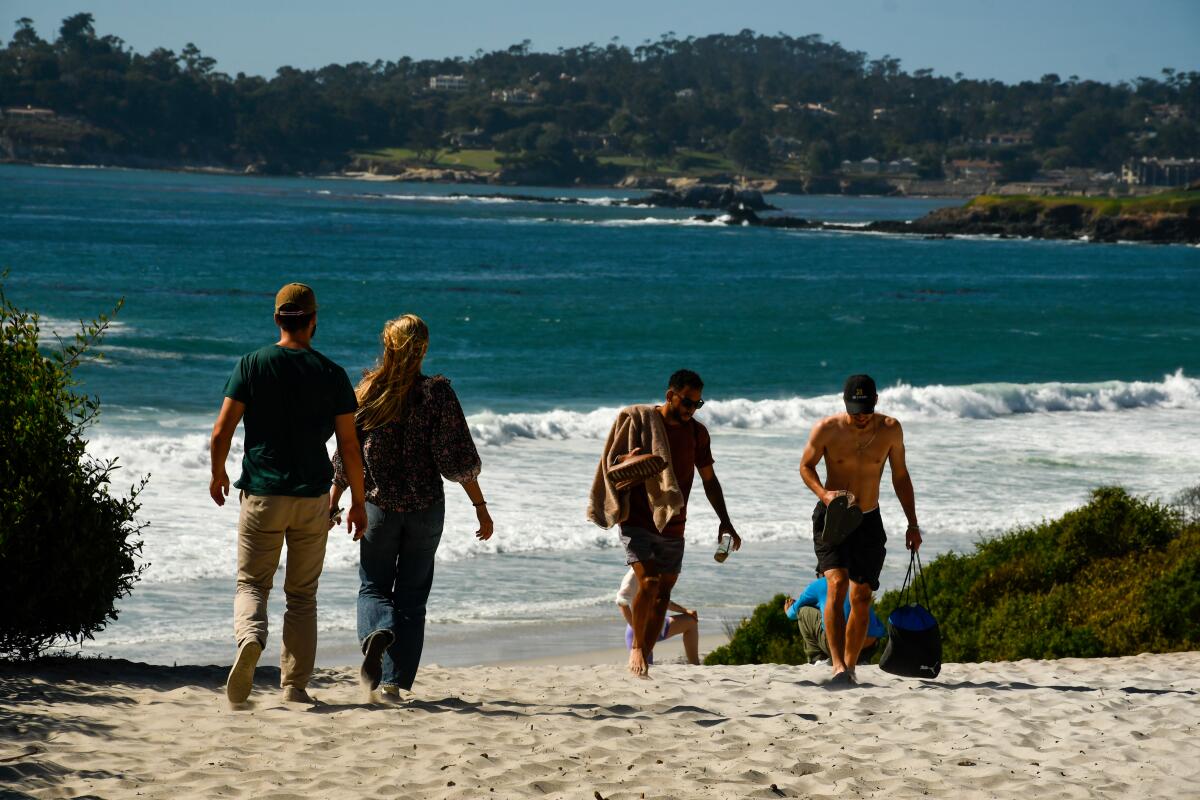
Carmel Beach
(Christopher Reynolds/Los Angeles Times)
If you're here on a Thursday between 10 a.m. and 2 p.m., you can pick up berries, hummus, cheese or dumplings and listen to a busker at the two-block Carmel-by-the-Sea Farmers Market on the 6th Avenue between Junipero and Mission Streets.
If you're around any day of the week, you can enter the Harrison Memorial Library on Ocean Avenue, admire architect Bernard Maybeck's 1928 Spanish eclectic design, and then solve a puzzle. There's always one going on in the reading room, open to all comers, and on cold days the librarians light the fireplace. (But on weekends, the building is tightly closed).
Instead of spending $350 a night on a hotel room, which is easy to do, we booked a glamping tent at the newly renovated Carmel River Inn for $226 a night. When we saw the dilapidated state of the inn's office, we were tempted to run, but once we got to our tent, one of several introduced this year, it had electricity, a king-size bed, a large screen, a media kitchen and its own large, solid-walled bathroom, all just a few minutes drive from the city center. Thumbs up, especially if it's hot.
If we were going to sleep a little fancier, I might have headed into town to book Le Petit Pali on 8th Avenue, which opened in June. Instead, I took the time to tour its 24 elegant, understated rooms and suites, which start at about $350 on fall weekends. (Its sister, the 34-room Le Petit Pali on Ocean Avenue, a few blocks away, is also nice, but the 8th Avenue accommodation is on a quieter street with a larger patio.)
And here's a footnote for big spenders: if we were really going to splurge on accommodation, then I would have booked us into Villa Mara Carmel, which looks like a single house in the largely residential area of Carmel Point. If you look closer, you will discover that it is actually a luxury accommodation. Accepts people over 21 years old, with 15 rooms and a cabin, but without a pool. It opened in 2022. Its nightly rates for fall weekends rarely fall below $600. A Conde' Nast Traveler reviewer called it “the quintessential barefoot Northern California experience.”
Carmel hasn't always been so rich, but she's always been so pretty and artistic.
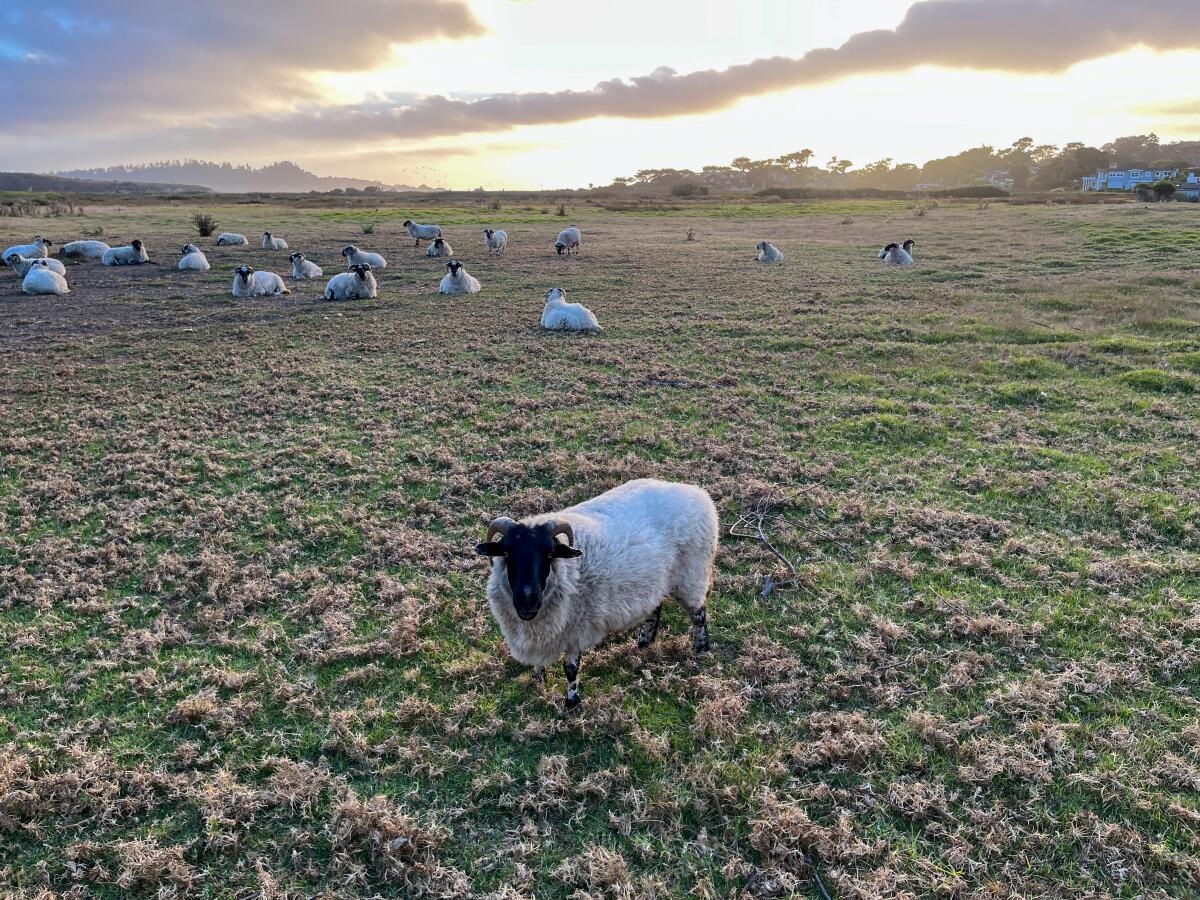
Mission Ranch in Carmel includes a sheep paddock and spectacular sunset views.
(Christopher Reynolds/Los Angeles Times)
“Carmel is not so much an art colony as a work of art,” historian Carey McWilliams wrote in 1930. He called the landscape charming, surprising and unforgettable. And then, as you can read in David Kipen's newly published collection of diary entries and letters, “Dear California,” McWilliams warned that the Los Angeles Realtors would soon come to ruin everything.
“Carmel has become a splendid experience in the lives of many Western artists,” McWilliams wrote, “and they will view its desecration with indescribable horror.”
So welcome, I suppose, to the most curious desecration you've ever seen.
Officially called Carmel-by-the-Sea, the town measures approximately 1 square mile; In reality, it is a town. Most homes and businesses are located on small lots, and the buildings are often designed with fairy-tale flourishes, as if commissioned by hobbits with trust funds.
Despite a modest population of about 3,800, Carmel is home to about 60 restaurants, about 40 hotels and inns, dozens of galleries, and 18 tasting rooms.
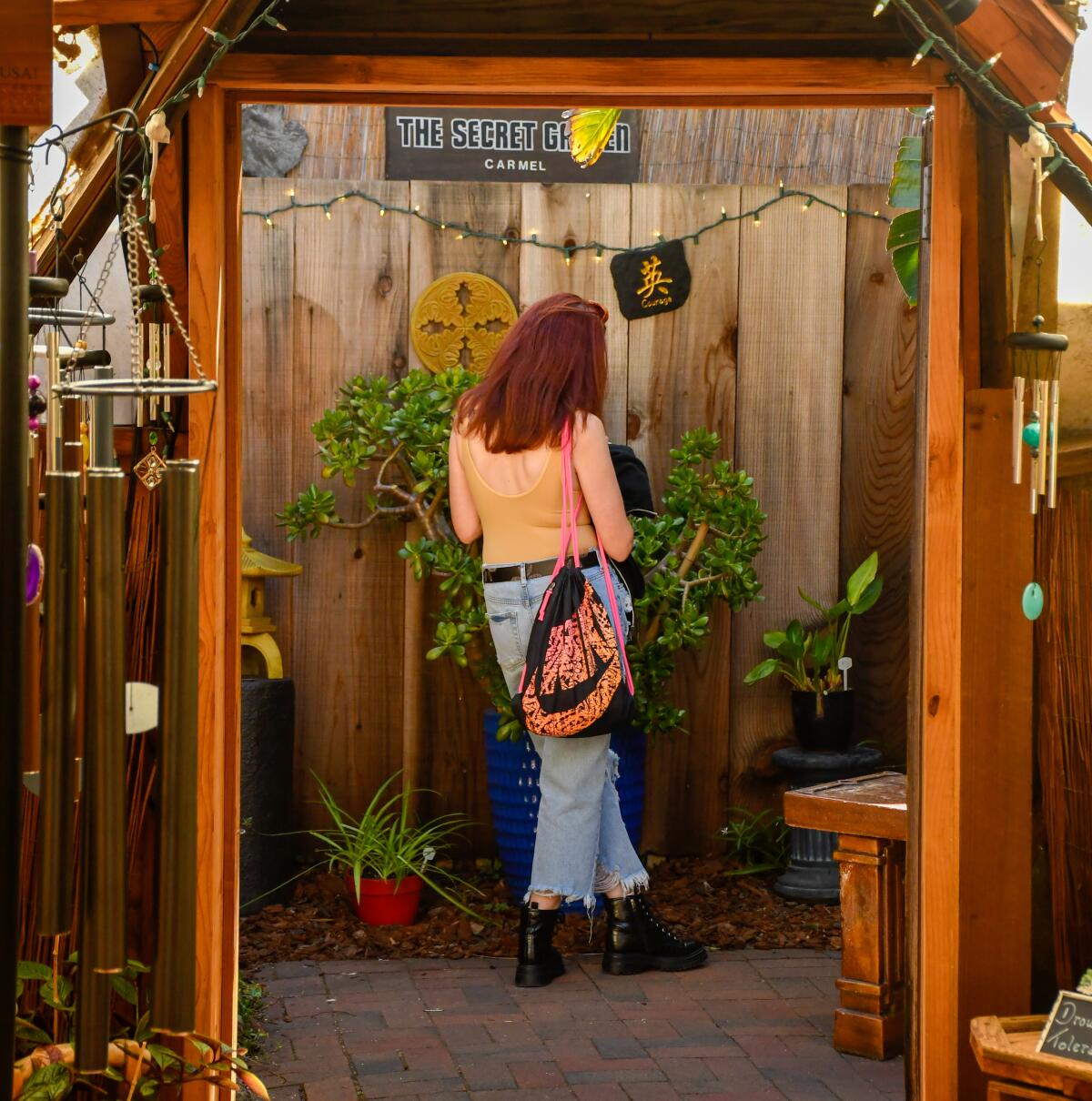
The Books of the Pilgrim's Way in Carmel have a “secret” garden in the back.
(Christopher Reynolds/Los Angeles Times)
There are no address numbers within the city limits (because it is customary for locals to pick up mail at the post office) and many owners have named their houses, after land-based yachts. Short-term rentals are prohibited (although they are allowed in neighboring areas).
The city was born at the end of the 19th century as a wooded paradise for bohemians. Its headliner for many years was the poet Robinson Jeffers, who built a stone house near Carmel Point, Tor House, which can be visited on Saturdays.
Photographers Edward Weston and Ansel Adams came later, as did many painters, sculptors, poets, architects and actors, including some who are better known for work done elsewhere.
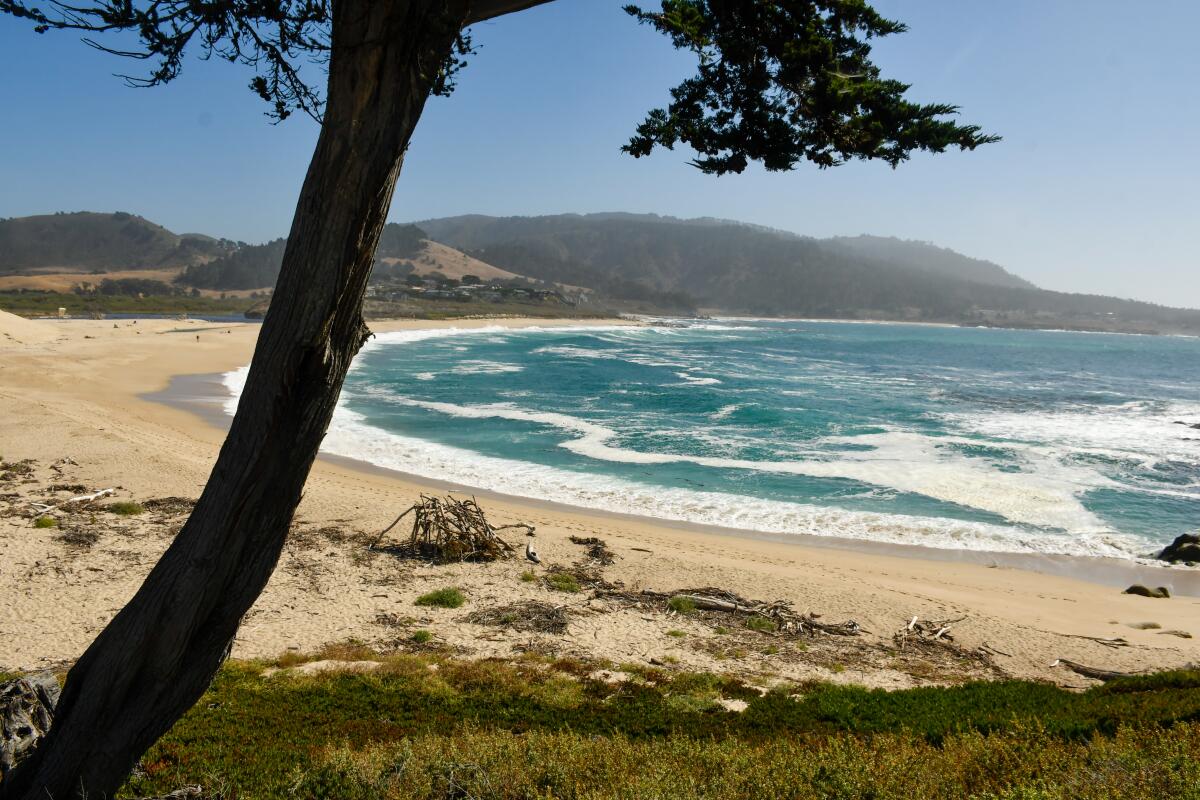
Carmel River State Beach
(Christopher Reynolds/Los Angeles Times)
The city has never had a reputation for diversity (and remains 90% white), but the black poet Langston Hughes spent a year in the city in the early 1930s. He then published a collection of short stories called “The Customs of the People white”.
Although I always thought of architects Greene & Greene as people from Pasadena (and pioneers of the Craftsman bungalow), I learned better on this trip. The oldest brother, Charles Sumner Greene, eventually left Pasadena and spent more than 30 years working and living in Carmel.
He built one of his masterpieces in Carmel Highlands, a clifftop stone-walled house called Seaward, and put together a more humble place for himself on Lincoln Street, using bricks and tiles recycled from other projects.
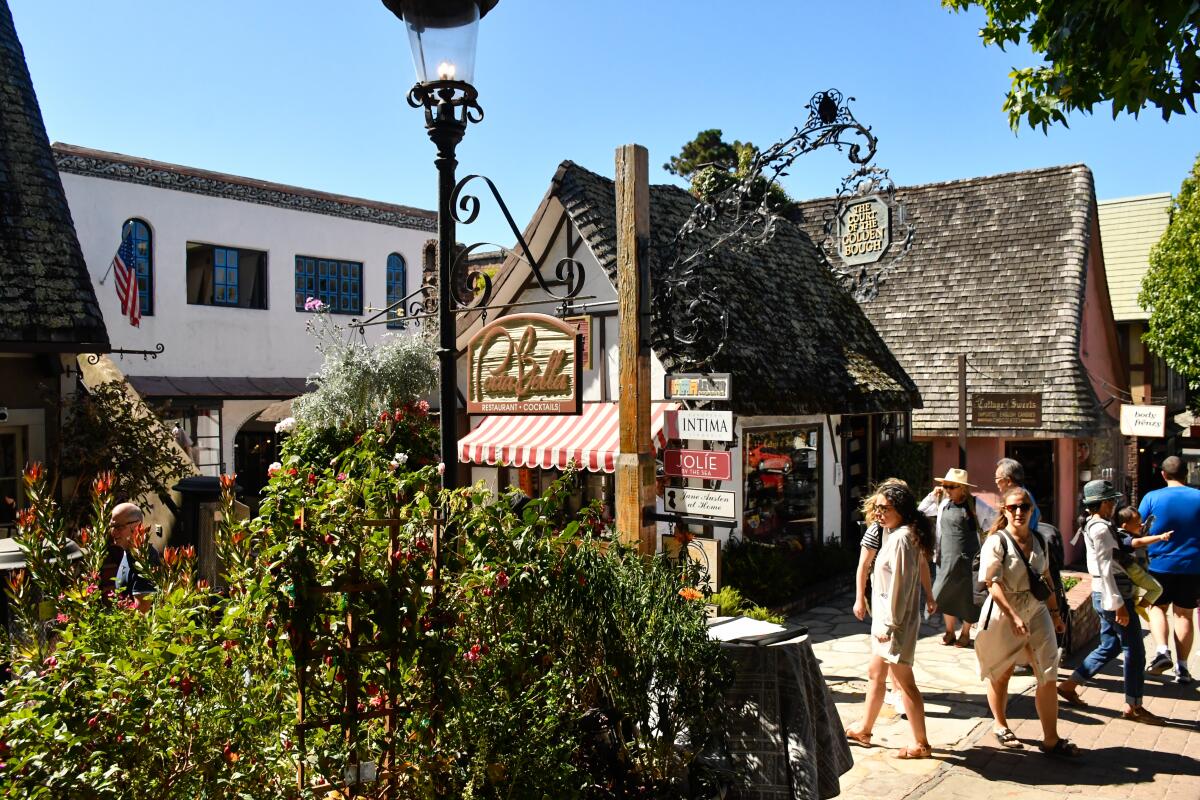
Along Ocean Avenue and the residential streets of Carmel, storybook architecture is prominent.
(Christopher Reynolds/Los Angeles Times)
Clint Eastwood, who was mayor briefly in the 1980s and owned the Hog's Breath Inn, still lives here and owns the Mission Ranch Hotel and Restaurant. There we had pre-dinner drinks, watched the sheep and watched a brilliant sunset over the meadow.
The closer you look, the more Hollywood names you see. Betty White had a place on Ribera Road until her death in 2021. Doris Day, co-owner of Carmel's Cypress Inn for many years, died at her Carmel Ranch home in 2019.
Oh, and Brad Pitt last year purchased an architectural landmark in Carmel Highlands that he'd been eyeing for years: Charles Sumner Greene's cliff-top, stone-walled Seaward House. Sale price: 40 million dollars.
We had splendid lunches at La Bicyclette (European country kitchen and wood-fired pizza oven) and Anton & Michel (modern European menu with a nice patio), both of which have been in town for years.
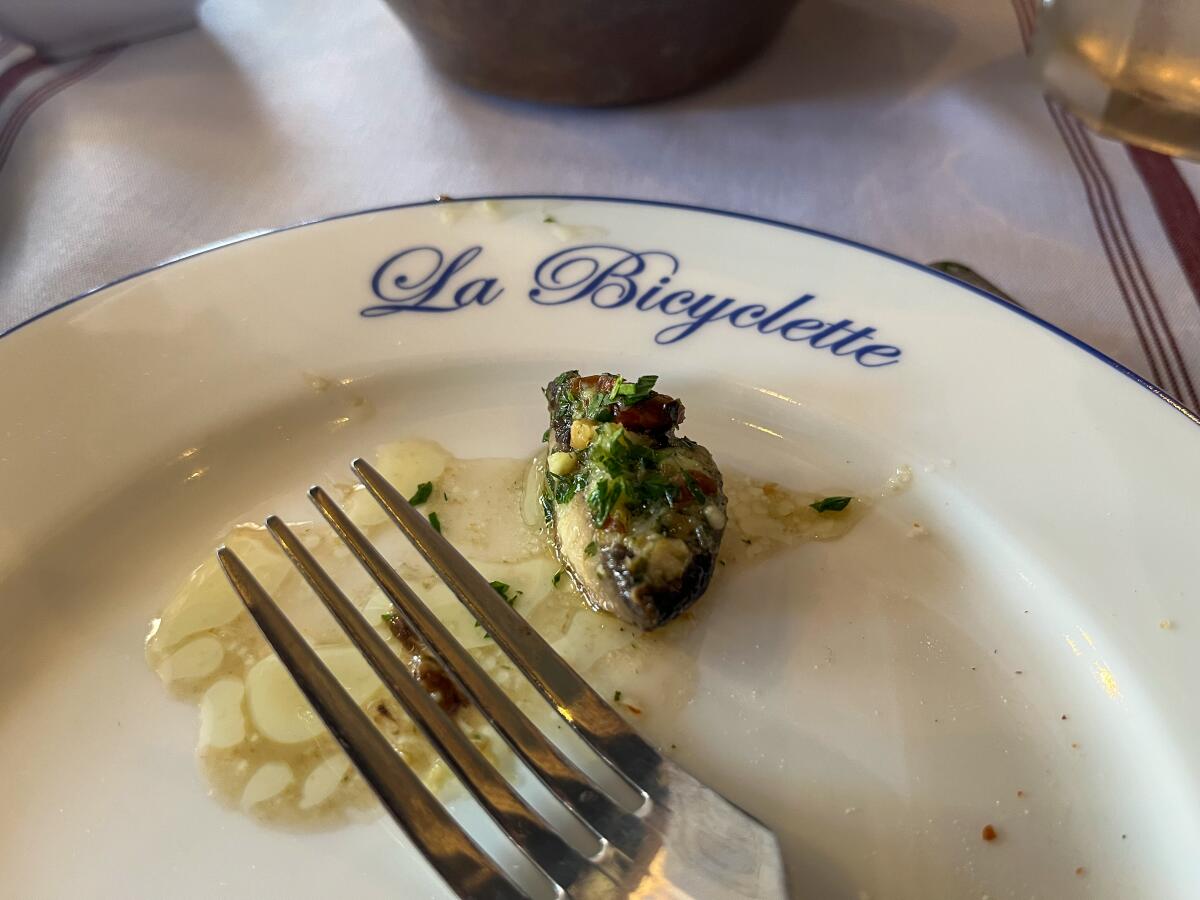
La Bicyclette Restaurant, Carmelo.
(Christopher Reynolds/Los Angeles Times)
Our most memorable meal was a splurge dinner on the patio at the Pocket, which opened during some of the worst days of the pandemic (the summer of 2020) and thrived anyway, offering steaks, seafood, and Italian food. We sat outside by a campfire.
The only gallery in town that I would call a must-see is the spacious Carmel Art Assn., a non-profit entity that showcases the work of more than 100 local artists, maintaining high standards. The association, which dates back to 1927, notably overcame the pandemic.
“We didn't find any decline in sales here,” said Grace Aniela Wodecki, the gallery's sales, design and marketing associate. “Our hypothesis is that many people who normally don't spend a lot of time in their second homes were spending more time in their second homes” and redecorating.
Watch LA Times Today at 7 pm on Spectrum News 1 on Channel 1 or stream live on the Spectrum News app. Viewers on the Palos Verdes Peninsula and Orange County can watch it on Cox Systems on channel 99.

